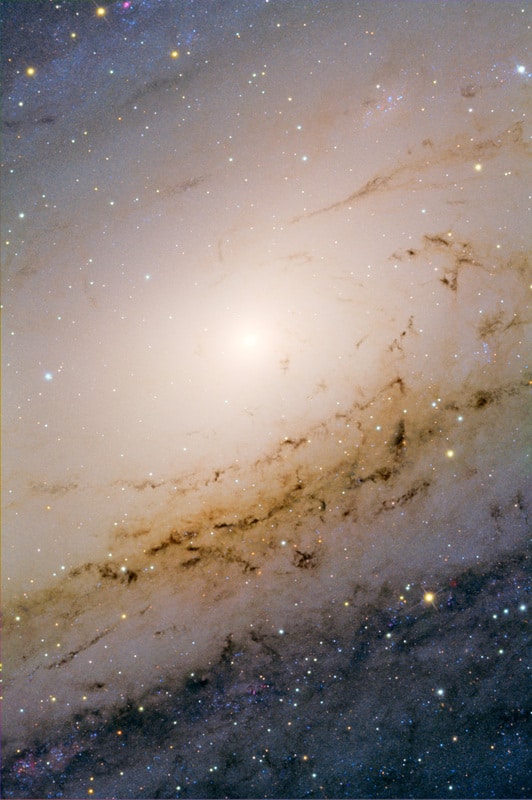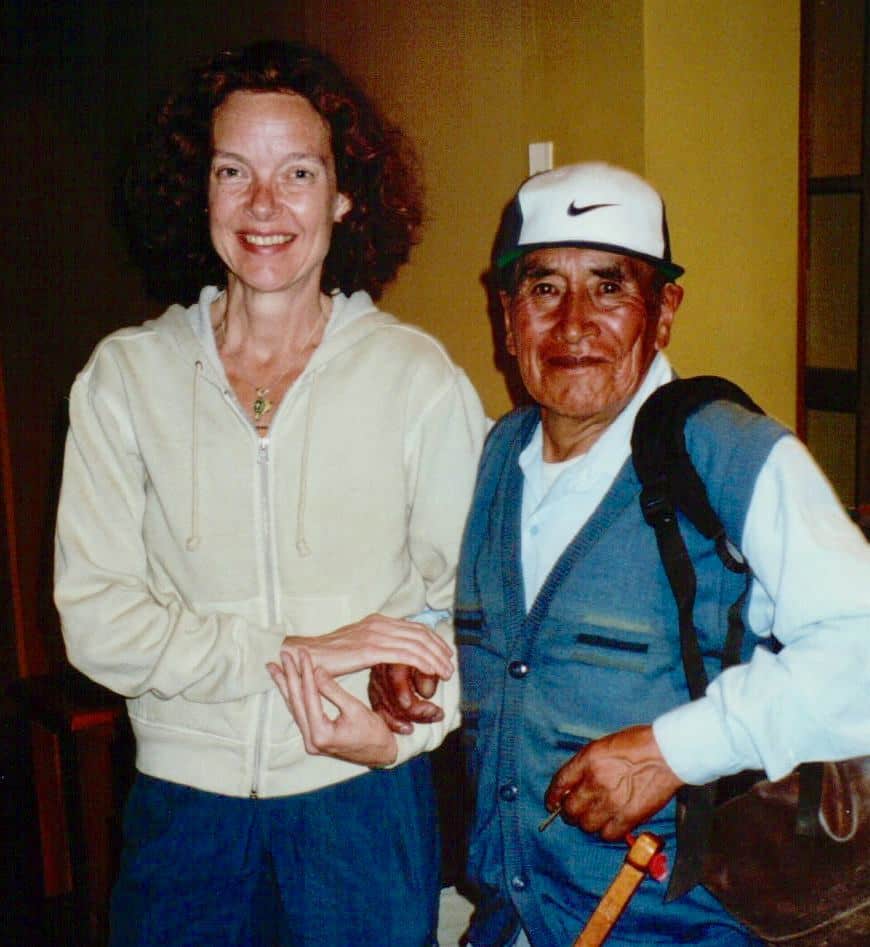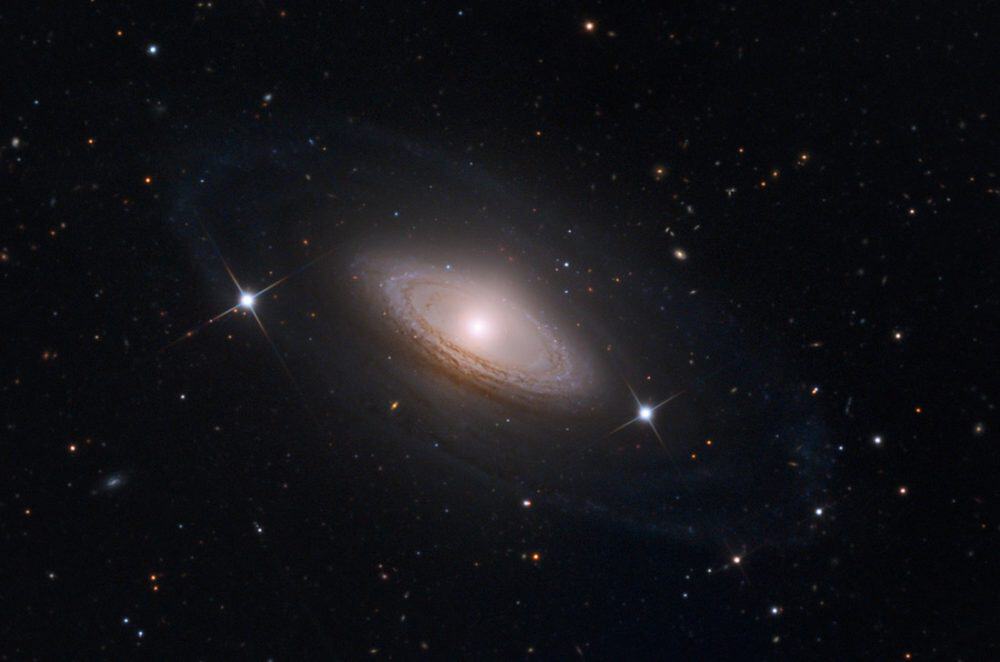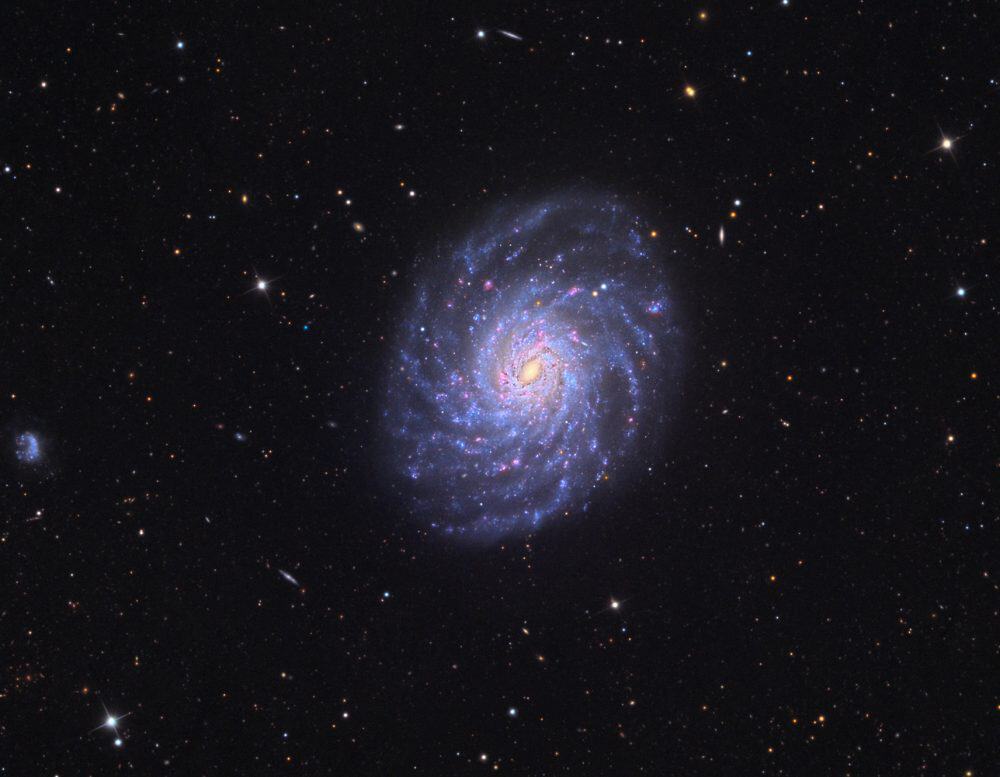Blog
The Andromeda Galaxy (/ænˈdrɒmɪdə/), also known as Messier 31, M31, or NGC 224, is a spiral galaxy approximately 780 kiloparsecs (2.5 million light-years) from Earth, and the nearest major galaxy to the Milky Way. Its name stems from the area of the Earth’s sky in which it appears, the constellation of Andromeda.
The 2006 observations by the Spitzer Space Telescope revealed that the Andromeda Galaxy contains approximately one trillion stars, more than twice the number of the Milky Way’s estimated 200 to 400 billion stars. The Andromeda Galaxy’s mass is estimated to be around 1.76 times that of the Milky Way Galaxy (~0.8-1.5×1012 solar masses vs the Milky Way’s 8.5×1011 solar masses), though a 2018 study found that the Andromeda Galaxy’s mass is roughly the same as the Milky Way’s. The Andromeda Galaxy, spanning approximately 220,000 light-years, is the largest galaxy in the Local Group, which is also home to the Triangulum Galaxy and other minor galaxies.
The Milky Way and Andromeda galaxies are expected to collide in ~4.5 billion years, merging to form a giant elliptical galaxy or a large disc galaxy. With an apparent magnitude of 3.4, the Andromeda Galaxy is among the brightest of the Messier objects making it visible to the naked eye from Earth on moonless nights, even when viewed from areas with moderate light pollution.
more...Shirley Scott (March 14, 1934 – March 10, 2002) was an American jazz organist.
Born in Philadelphia, Pennsylvania, Scott studied trumpet and piano in school. As a performer in the 1950s, she played the Hammond B-3 organ. Her recordings with Eddie “Lockjaw” Davisincluded the hit “In the Kitchen”. Influenced by gospel and blues, she played soul jazz in the 1960s with Stanley Turrentine, who became her husband during the same decade; the couple divorced in 1971.
Although organ trios declined in popularity during the 1970s, they resurged in the 1980s and she recorded again. In the 1990s, she recorded as pianist in a trio and performed at venues in Philadelphia. She was also a jazz educator.
Scott won an $8 million settlement in 2000 against American Home Products, the manufacturers of the diet drug fen-phen. She died of heart failure in 2002.
https://www.youtube.com/watch?v=GbpElY1L0qE
more...
Quincy Delight Jones Jr. (born March 14, 1933) is an American record producer, musician, composer, and film producer. His career spans six decades in the entertainment industry with a record 80 Grammy Award nominations, 28 Grammys, and a Grammy Legend Award in 1992.
Jones came to prominence in the 1950s as a jazz arranger and conductor, before moving on to work in pop music and film scores. In 1969, Jones and his songwriting partner Bob Russellbecame the first African-Americans to be nominated for an Academy Award for Best Original Song, for “The Eyes of Love” from the film Banning. Jones was also nominated for an Academy Award for Best Original Score for his work on the 1967 film In Cold Blood, making him the first African-American to be nominated twice in the same year. In 1971, he became the first African-American to be the musical director and conductor of the Academy Awards ceremony. In 1995, he was the first African-American to receive the Academy’s Jean Hersholt Humanitarian Award. He has tied with sound designer Willie D. Burton as the second most Oscar-nominated African-American, with seven nominations each.
Jones was the producer, with Michael Jackson, of Jackson’s albums Off the Wall (1979), Thriller (1982), and Bad (1987), as well as the producer and conductor of the 1985 charity song “We Are the World“, which raised funds for victims of famine in Ethiopia. In 2013, Jones was inducted into the Rock & Roll Hall of Fame as the winner, alongside Lou Adler, of the Ahmet Ertegun Award. He was named one of the most influential jazz musicians of the 20th century by Time magazine.
Quincy Delight Jones Jr. was born on the South Side of Chicago on March 14, 1933, the son of Sarah Frances (née Wells), a bank officer and apartment complex manager, and Quincy Delight Jones Sr., a semi-professional baseball player and carpenter from Kentucky.
more...Georg Philipp Telemann (24 March [O.S. 14 March] 1681 – 25 June 1767) (German pronunciation: [ˈteːləman]) was a German Baroque composer and multi-instrumentalist. Almost completely self-taught in music, he became a composer against his family’s wishes. After studying in Magdeburg, Zellerfeld, and Hildesheim, Telemann entered the University of Leipzig to study law, but eventually settled on a career in music. He held important positions in Leipzig, Sorau, Eisenach, and Frankfurt before settling in Hamburg in 1721, where he became musical director of the five main churches. While Telemann’s career prospered, his personal life was always troubled: his first wife died only a few months after their marriage, and his second wife had extramarital affairs and accumulated a large gambling debt before leaving Telemann.
Telemann is one of the most prolific composers in history (at least in terms of surviving oeuvre)[2] and was considered by his contemporaries to be one of the leading German composers of the time—he was compared favorably both to his friend Johann Sebastian Bach, who made Telemann the godfather and namesake of his son Carl Philipp Emanuel, and to George Frideric Handel, whom Telemann also knew personally. Telemann’s music incorporates several national styles (French, Italian, German) and is even at times influenced by Polish popular music. He remained at the forefront of all new musical tendencies and his music is an important link between the late Baroque and early Classical styles.
As part of his duties, he wrote much music for educating organists under his direction. This includes 48 chorale preludes and 20 small fugues (modal fugues) to accompany his chorale harmonizations for 500 hymns.
NGC 4698 is a barred spiral galaxy located around 55 million light years away from Earth in the constellation of Virgo. It belongs to the Virgo Cluster of galaxies and is positioned near the northeastern edge of this assemblage. The morphological classification of NGC 4698 in the De Vaucouleurs system is SA(s)ab, which indicates a purely spiral structure with moderate to tightly wound arms. It is inclined to the line of sight from the Earth by an angle of 53° along a position angle of 170°.
A unique feature of this galaxy is that the stars and dust of the nuclear disk are rotating in a direction that is aligned perpendicularly to the galactic disk. The bulge likewise appears elongated out of the galactic plane. This unusual alignment may have been the result of a past merger event.
NGC 4698 is classified as a Seyfert-2 galaxy with an active galactic nucleus, which displays a prominent emission of radio and X-ray energy from the core while showing narrow emission lines in the optical spectrum. The unified model of Seyfert galaxies proposes that the nucleus of a Seyfert 2 galaxy is obscured by a thick torus of gas and dust. However, the varying X-ray emission of the core of NGC 4698 shows little indication of being obstructed, suggesting instead that the source of the energy emission is generally unobscured but anemic in nature.
more...Richard Allen “Blue“ Mitchell (March 13, 1930 – May 21, 1979) was an American jazz, rhythm and blues, soul, rock and funk trumpeter, and composer, who recorded many albums as leader and sideman for Riverside, Blue Note and Mainstream Records. Mitchell was born and raised in Miami, Florida. He began playing trumpet in high school, where he acquired his nickname, Blue.[
After high school he played in the rhythm and blues ensembles of Paul Williams, Earl Bostic, and Chuck Willis. After returning to Miami he was noticed by Cannonball Adderley, with whom he recorded for Riverside Records in New York in 1958.
He then joined the Horace Silver Quintet, playing with tenor saxophonist Junior Cook, bassist Gene Taylor and drummer Roy Brooks. Mitchell stayed with Silver’s group until the band’s break-up in 1964, after which he formed a group with members from the Silver quintet, substituting the young pianist Chick Corea for Silver and replacing Brooks, who had fallen ill, with drummer Al Foster. This group produced a number of records for Blue Note. It disbanded in 1969, after which Mitchell joined and toured with Ray Charles until 1971.
From 1971 to 1973 Mitchell performed with John Mayall, appearing on Jazz Blues Fusion and subsequent albums. From the mid-70s he recorded and worked as a session man in the genres noted previously, performed with the big band leaders Louie Bellson, Bill Holman and Bill Berry and was principal soloist for Tony Bennett and Lena Horne. Other band leaders Mitchell recorded with include Lou Donaldson, Grant Green, Philly Joe Jones, Jackie McLean, Hank Mobley, Johnny Griffin, Al Cohn, Dexter Gordon and Jimmy Smith.
https://www.youtube.com/watch?v=6-HfjaPHd0Q
more...Roy Owen Haynes (born March 13, 1925) is an American jazz drummer and group leader. Haynes is among the most recorded drummers in jazz, and in a career lasting over 70 years has played in a wide range of styles ranging from swing and bebop to jazz fusion and avant-garde jazz. He has a highly expressive, personal style (“Snap Crackle” was a nickname given him in the 1950s).
He has also led his own groups, some performing under the name Hip Ensemble. His recordings as a leader, Fountain of Youth and Whereas, were nominated for a Grammy Award. He continues to perform worldwide and was inducted into the Modern Drummer Hall of Fame in 1999. His son Graham Haynes is a cornetist; his son Craig Haynes and grandson Marcus Gilmore are both drummers. Born in the Roxbury section of Boston, Massachusetts, Haynes made his professional debut in 1944 in his native Boston.
Haynes began his full-time professional career in 1945. From 1947 to 1949 he worked with saxophonist Lester Young, and from 1949 to 1952 was a member of saxophonist Charlie Parker‘s quintet. He also recorded at the time with pianist Bud Powell and saxophonists Wardell Gray and Stan Getz. From 1953 to 1958 he toured with singer Sarah Vaughan and also recorded with her.
more...Otis Verries Hicks, known as Lightnin’ Slim (March 13, 1913 – July 27, 1974), was an African-American Louisiana blues musician, who recorded for Excello Records and played in a style similar to its other Louisiana artists. The blues critic ED Denson ranked him as one of the five great bluesmen of the 1950s, along with Muddy Waters, Little Walter, Howlin’ Wolf and Sonny Boy Williamson.
According to most sources, Otis Hicks was born on a farm outside St. Louis, Missouri, but the researchers Bob Eagle and Eric LeBlanc stated, on the basis of his draft card, that he was born in Good Pine, Louisiana. He moved to Baton Rouge at the age of thirteen. Taught guitar by his older brother Layfield, Slim was playing in bars in Baton Rouge by the late 1940s.
His first recording was “Bad Luck Blues” (“If it wasn’t for bad luck, I wouldn’t have no luck at all”), released by J. D. “Jay” Miller‘s Feature Records in 1954. It was Miller, who had a penchant for picking colourful artists’ names, who christened him “Lightnin’ Slim”. Slim then recorded for Excello Records for twelve years, starting in the mid-1950s, often collaborating with his brother-in-law Slim Harpo and with the harmonica player Lazy Lester.
more...IC 2177 (also known as vdB 93 ) is an emission and reflection nebula visible in the constellation of the Unicorn .
It is identified on the western edge of the Seagull Nebula , a large region H II connected to a molecular nebula complex in which star-formingphenomena take place, and ideally constitutes the “head” of the bird; its position is about 3 ° to ENE of θ Canis Majoris , an orange star of fourth magnitude . It appears as a cloud with a rounded shape, with a dense dark line that crosses it from the north and a luminous arched band that stretches southwards; its brightness allows it to be easily photographed even with medium power amateur instruments and observed through special filters. The mass of the cloud is about 16,000 M ⊙ and is placed to the west of the long luminous trail of the body of the Seagull Nebula;the gas it contains is partly ionized and partly illuminated by reflection due to the radiation coming in particular from HD 53367, a blue giant withextremely high and extremely young emissions ; this star is the primary component of a binary system that includes this and a smaller star, surrounded by a protoplanetary disk , which performs a very eccentric orbit around the primary. This star system is part of the OB Canis Major R1 association, a subgroup of the larger Canis Major OB1 association, whose main feature is the link with extensive reflection nebulae.
more...James Vernon Taylor (born March 12, 1948) is an American singer-songwriter and guitarist. A five-time Grammy Award winner, he was inducted into the Rock and Roll Hall of Fame in 2000. He is one of the best-selling music artists of all time, having sold more than 100 million records worldwide.
Taylor achieved his breakthrough in 1970 with the No. 3 single “Fire and Rain” and had his first No. 1 hit in 1971 with his recording of “You’ve Got a Friend“, written by Carole King in the same year. His 1976 Greatest Hits album was certified Diamond and has sold 12 million US copies. Following his 1977 album, JT, he has retained a large audience over the decades. Every album that he released from 1977 to 2007 sold over 1 million copies. He enjoyed a resurgence in chart performance during the late 1990s and 2000s, when he recorded some of his most-awarded work (including Hourglass, October Road, and Covers). He achieved his first number-one album in the US in 2015 with his recording Before This World.
He is known for his popular covers, such as “How Sweet It Is (To Be Loved by You)” and “Handy Man“, as well as originals such as “Sweet Baby James“.
James Vernon Taylor was born at Massachusetts General Hospital in Boston on March 12, 1948, where his father, Isaac M. Taylor, worked as a resident physician. His father came from a wealthy Scottish family from the South, however, part of his ancestral roots are deep in Massachusetts Bay Colony and include Edmund Rice, one of the founders of Sudbury, Massachusetts.
https://www.youtube.com/watch?v=JOIo4lEpsPY
more...Don Drummond (12 March 1932 – 6 May 1969) was a Jamaican ska trombonist and composer. He was one of the original members of The Skatalites, and composed many of their tunes.
Drummond was born at the Jubilee Hospital in Kingston, Jamaica, to Doris Monroe and Uriah Drummond. He was educated at Kingston’s Alpha Boys School, where he later taught his younger schoolmate Rico Rodriguez to play the trombone.
His musical career began in 1950 with the Eric Dean’s All-Stars where he performed jazz. He continued into the 1960s with others, including Kenny Williams.
After performing jazz for a decade, Drummond began performing ska and in 1964 Don joined The Skatalites. With Drummond’s politicized conversion to the Rastafari movement, other band members followed his lead. He became a household name in Jamaica, before suffering mental problems. He was rated by pianist George Shearing to be among the world’s top five trombone players.
In 1965 Drummond was convicted of the murder of his longtime girlfriend, Anita “Marguerita” Mahfood, an exotic rhumba dancer and singer, on 1 January 1965. He was ruled criminally insane and imprisoned at Bellevue Asylum, Kingston, where he remained until his death four years later. The official cause of death was “natural causes”, possibly heart failure caused by malnutrition or improper medication, but other theories were put forward; some of his colleagues believed it was a government plot against the Kingston musical scene, and some believed that he was killed by gangsters as revenge for the murder of Mahfood. Heather Augustyn, author of a biography of Drummond published in 2013 claimed to have proved that Drummond’s death was caused by his medications.
more...Jesse Fuller (March 12, 1896 – January 29, 1976) was an American one-man band musician, best known for his song “San Francisco Bay Blues“.
In the 1920s he lived in southern California, where he operated a hot-dog stand and was befriended by Douglas Fairbanks. He worked briefly as a film extra in The Thief of Bagdad (1924) and East of Suez. In 1929 he settled in Oakland, across the bay from San Francisco, where he worked for the Southern Pacific Railroad for many years as a fireman, spike driver, and maintenance-of-way worker. He married, and he and his wife, Gertrude, had a family. During World War II, he worked as a shipyard welder, but when the war ended he found it increasingly difficult to secure employment. Around the early 1950s, Fuller began to consider the possibility of making a living as a musician.
Up to this point, Fuller had never worked as a full-time professional musician, but he was an accomplished guitarist and he had carried his guitar with him and busked for money by passing the hat. He had a good memory for songs and had a large repertoire of crowd-pleasers in diverse styles, including country blues, work songs, ragtime and jazz standards, ballads, spirituals, and instrumentals. For a while, he operated a shoe-shine stand, where he sang and danced to entertain passersby. He began to compose songs, many of them based on his experiences on the railroads, and also reworked older pieces, playing them in his syncopated style. When he set out to make a career as a musician, he had difficulty finding reliable musicians to work with: thus his one-man band act was born, and he started calling himself “The Lone Cat.”
more...Sweden
more...NGC 3486 is an intermediate barred spiral galaxy located about 27.4 million light years away in the constellation of Leo Minor. It has a morphological classification of SAB(r)c, which indicates it is a weakly barred spiral with an inner ring and loosely wound arms.This is a borderline, low-luminosity Seyfert galaxy with an active nucleus. However, no radio or X-ray emission has been detected from the core, and it may only have a small supermassive black hole with less than a million times the mass of the Sun.
more...More Posts
- Stanley Turrentine Day
- Billy Bland Day
- World Music with Brian Ó hEadhra
- Daily Roots with Tarrus Riley
- The Cosmos with the Manicouagan Crater
- Hugh Masekela Day
- Muddy Waters Day
- Cecil Gant Day
- World Music with Myrkur
- Daily Roots with Prince Far I
- Alpha Ousmane “Hama” Sankaré Memorial
- The Cosmos with LHA 120-N 150
- Scott LaFaro Day
- Jimmy McGriff Day
- Bubber Miley Day
- Flamenco Fridays with Alberto López
- Daily Roots with Abed Nago
- Music for the Pandemic-Isolation
- The Cosmos with NGC 4490/4485
- Larry Coryell Day




